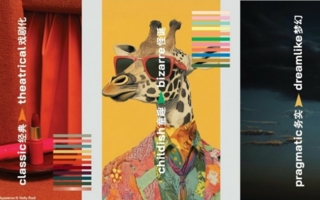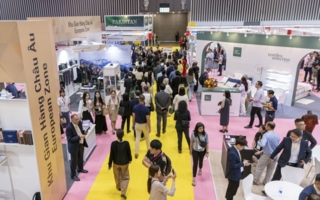15/07/2025 – 41st edition
Milano Unica: strong rise in global visitors
The 41st edition of Milano Unica, showcasing the F/W 2026-2027 collections of high-end fabrics and accessories for menswear, womenswear and childrenswear, concluded with a notable increase in international attendance –+10% compared to the corresponding edition in 2024.
The growth was recorded across all the major markets for “Made-in-Italy” textiles: the Netherlands (+46%), Germany (+33%), UK (+23%), USA (+16%), France (+14%), and Japan (+9,5%). Conversely, China declined by -3.5% vs the July 2024 edition and Korea by -14%. International attendance accounts for 45% of the total, marking a comprehensive success that adds to the already excellent starting figures. 735 exhibitors in total, 584 of whom participated in the Ideabiella, Moda In and Shirt Avenue exhibitions (+2.6%), including 459 confirmed Italian participants and a significant +8.7% rise in European exhibitors.
“On the eve of the event, we were concerned about international participation given the complex and challenging global geopolitical and economic situation. However, the 41st edition of Milano Unica further strengthened its role as a global platform for marketing and commercial promotion. Nearly all key export markets for “Made-in-Italy” textiles and accessories – both within and outside the EU – responded positively. While the real outcomes will be seen in 2026 – and we hope they will be positive – the feedback from our exhibitors regarding business contacts and buyer attendance allows us to look to the future with moderate optimism,” commented Simone Canclini, President of Milano Unica. Elena Buscemi, President of the Milan City Council, conveyed greetings from Mayor, Giuseppe Sala, and acknowledged the industry’s critical role in the success of “Made-in-Italy” manufacturing and Milan’s key position as host to this landmark event. Matteo Zoppas, President of the Italian Trade Agency ICE, sent a video message expressing concern about “the negative start to 2025, marked by a decline in textile exports,” and stressed the need to “continue investments in resources to support the industry.” He also highlighted the presence of 110 buyers from key international markets at Milano Unica as a sign of ICE’s ongoing commitment.
From legacy to experience
Edoardo Zegna, Chief Marketing Digital and Sustainability Officer and member of the fourth generation of the Ermenegildo Zegna Group was interviewed by Nicola Porro, Vice-Editor-in-chief of Il Giornale and host of Quarta Repubblica. Zegna spoke about the generational transition in the family business and his own contribution to its evolution, while Claudia D'Arpizio, Senior Partner and Global Head of Fashion and Luxury at Bain
& Company, spoke about the situation and outlook for the luxury market. Edoardo Zegna traced the company’s history, now in its fourth generation. The first generation, led by his great-grandfather Ermenegildo in 1910, laid the foundation of the business and developed a vision; the second expanded internationally and introduced finished products; the third, – his father Gildo and his uncles – built the brand and a broader vision for the textile industry. Now it is fourth generation’s turn, whose task is not to add more products, but rather to introduce an emotional and experiential dimension – one that helps consumers understand the difference between something merely expensive and something truly valuable due to its intrinsic value.
Claudia D'Arpizio highlighted the similarities between the present and the 2008 crisis – with one key difference: the role of China, which at that time represented a lifeline for the entire Made-in-Italy supply chain. Today, the upstream supply chain has no lifeline in the often unjustified price increase spree adopted by many luxury brands. “The China we once knew no longer exists. Back then, China was playing an important role in the high-end market, because Chinese consumers considered luxury purchases as a symbol of success and even the political class was encouraging this trend. Now, the situation has radically changed. For the first time, the Chinese government is facing the challenge of youth unemployment amid a slowing economy. It is true that there are new markets like India and the Middle East, which hold a great potential, but they are more difficult to penetrate. As for the US, the situation is not easy either, though we are starting to see signs of improvement,” explained D’Arpizio.




